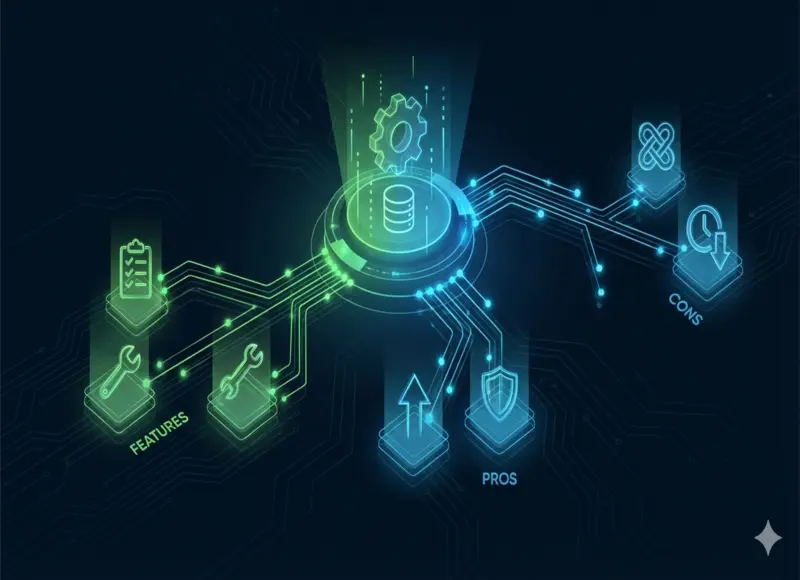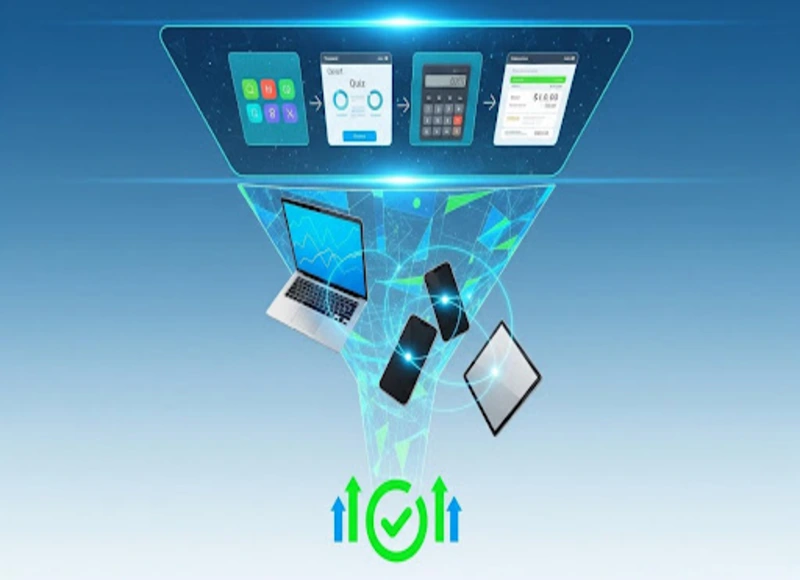Table of Contents
Discover how students can prepare for the digital defense landscape. Gain insights and practical tips for future cybersecurity success. Learn key strategies to ensure their readiness in the evolving world of cybersecurity.

In our increasingly interconnected world, digital defense has surged to the forefront of crucial life skills. As the digital frontier expands, so too does the shadowy realm of cyber threats, targeting not only major corporations and governments but also the hallowed halls of our educational institutions. From data breaches to ransomware attacks, the digital sanctuaries of learning are not immune to the perils of the online world.
The onus of defense, however, doesn't just lie with institutions. Students, being the primary users of academic digital platforms, must be equipped to safeguard their virtual footprints. Digital defense is no longer a niche skill set reserved for IT professionals; it's an essential knowledge area for everyone navigating the online world.
For many students, their journey into the digital realm begins with benign searches on platforms like “write my college papers” or accessing e-learning modules. However, without adequate defense know-how, these simple tasks can inadvertently expose them to risks, underscoring the importance of cybersecurity education.
Why We Need Safety in the Digital Landscape
To effectively prepare for the future of digital defense, students must first comprehend the vast and intricate digital landscape they inhabit. This ecosystem isn't just limited to social media platforms or e-commerce sites; it encompasses online databases, cloud storage, digital communication channels, and a plethora of interconnected devices known as the Internet of Things.
Within this vast digital expanse lie various threats. Phishing attacks have become commonplace, where malicious entities masquerade as trustworthy sources to extract sensitive information. Malware, which includes viruses, worms, and trojans, can infiltrate systems, causing havoc or silently siphoning data. Ransomware attacks, which lock users out of their data until a ransom is paid, have seen a significant uptick, with institutions, including schools, often being the primary targets.
Importance of Digital Defense in Education
The education sector, rich with a treasure trove of personal data, research findings, and intellectual property, is a prime target for cyber adversaries. Student records, academic research, financial details, and even intellectual property can fetch a high price in the internet's darker corners.
But beyond the financial implications, there's a more insidious threat. Cyberattacks on educational institutions can disrupt learning, skew academic results, and tarnish institutional reputations. Furthermore, their role in overall digital defense becomes even more pivotal in a world where institutions contribute to national and global digital infrastructures – through research collaborations, shared resources, or digital innovations. As the next generation of digital citizens, students must be adequately prepared to navigate this complex web of challenges.
How to Build a Solid Digital Defense Foundation
Before venturing into the advanced realms of cybersecurity, students must first master the basics. Just as a house needs a strong foundation, so does one's approach to digital defense. Central to this foundation is the concept of cyber hygiene. At its core, cyber hygiene refers to the routine practices and precautions users take to ensure the safety of their online presence.
One of the first lines of defense is password management. Students should be educated about creating strong, unique passwords for different platforms and the dangers of password reuse. Techniques such as passphrase creation, where a memorable sentence is used, can be both effective and easy to recall. Adopting multi-factor authentication, where an additional layer of verification (like a text message or biometric verification) is used, can significantly enhance account security.
Beyond passwords, students should be acquainted with secure browsing practices. Recognizing the signs of a secure website (like the padlock symbol or 'https' in the URL), being wary of downloading files from unknown sources, and understanding the risks of unsecured public Wi-Fi are all essential skills today.
Integrating Digital Safety
While standalone workshops and seminars on cybersecurity are beneficial, integrating digital defense into the broader educational curriculum can ensure a more holistic and sustained approach. Starting from elementary levels, students can be introduced to basic online safety protocols, progressively delving deeper into complex topics as they advance academically.
For instance, high school students can use practical sessions to simulate phishing attacks or set up secure networks. At higher education levels, subjects like cryptography, ethical hacking, or digital forensics can be offered, allowing students to specialize in cybersecurity domains.
Moreover, hands-on experiences can be invaluable. Setting up mock cyberattack scenarios or encouraging students to participate in cybersecurity competitions can provide real-world insights, preparing them for potential threats.
Promoting a Culture of Continuous Learning
The digital landscape is ever-evolving, with new threats emerging as quickly as defense mechanisms are developed. For students, this means that a "set it and forget it" approach to digital defense won't suffice. Instead, a culture of continuous learning must be ingrained.
To achieve this, educational institutions can foster partnerships with cybersecurity firms or professionals, ensuring that the latest trends and threats are regularly introduced to students. Encouraging students to earn certifications, attend seminars, or even partake in webinars can ensure they remain at the forefront of digital defense.
Furthermore, by establishing cybersecurity clubs or forums within campuses, students can collaborate, share insights, and stay updated, ensuring that the collective knowledge pool continuously grows and evolves.
Sustainability and Environmental Questions
While discussions around digital defense often center on immediate threats and solutions, there's an underlying layer concerning sustainability. As cyberattacks increase, so do the energy and resources expended to treat them. This heightened digital activity, from running server farms to data recovery processes, has a tangible environmental impact.
While preparing students for digital defense, educational institutions can also emphasize the importance of sustainable cybersecurity. Practices such as optimizing server utilization, promoting energy-efficient defense solutions, and encouraging the development of green cybersecurity research can meld the dual goals of digital protection and environmental responsibility.
Collaboration and Community Engagement
In the realm of digital defense, collaboration is a potent weapon. Cyber threats don't recognize institutional or geographical boundaries, making a unified, collective response crucial. Educational institutions can take the lead by fostering collaborations with other schools, universities, and even private cybersecurity entities. These collaborations can facilitate the sharing of threat intelligence, defense mechanisms, and best practices.
Community engagement is equally vital. Hosting or participating in community-based cybersecurity workshops, hackathons, or awareness campaigns can elevate the institution's defense stature and ensure that the larger community benefits from the shared knowledge. After all, in the digital realm, the security chain is only as strong as its weakest link.
Takeaway
In the vast ocean of resources available to students, ranging from the best websites where I can pay someone to write my research paper to digital libraries, the tools for digital defense stand out as quintessential lighthouses, guiding and protecting them from the treacherous waves of cyber threats. As we progress further into the digital age, the lines between our offline and online selves blur, making digital defense not just an IT concern but a life skill.
Future generations will become even more interconnected and digitally dependent than today's. It becomes our collective responsibility, especially for educational institutions, to ensure that they step into this world fully equipped with knowledge and the tools and skills to defend and protect that knowledge in the vast expanse of the digital universe.
Recent Blogs
Key Benefits of Hiring Nearshore React.js Development Teams for Enterprise Projects
-
20 Jan 2026
-
10 Min
-
127
Stop Building from Scratch: Boost Your Marketing Funnel with App Templates
-
13 Jan 2026
-
10 Min
-
466







